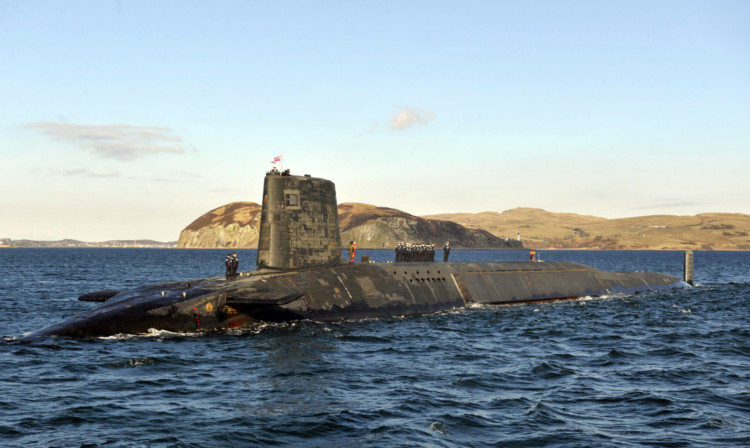
A potential North Sea-style oil boom off the Ayrshire coast was blocked by worried defence chiefs, a former MP has claimed.
Retired Labour politician David Lambie has said oil exploration work in the Firth of Clyde was stopped during the 1980s because of fears it would interfere with a vital training and exercise area for nuclear submarines.
Seismic and geological studies were carried out by energy giant BP in a 92 square mile stretch of water south of Arran which is a vital gateway to the Faslane naval base. But both BP and the UK Government say they no longer have copies of the survey results,
The revelation has prompted concerns among nationalists that the information has been deliberately suppressed.
The Sunday Post has spoken to people around at the time of the explorations who claim they were told oil had been discovered, including one worker on a BP survey ship. And Mr Lambie, a Labour MP in Ayrshire between 1970 and 1992, said: “One of the Tory MPs I was friendly with at the time told me privately that there was oil there but any further exploration was being blocked by the MoD.
“Because it was a part of the sea they used for exercises and training, the Navy told them to walk away from the application. I was furious, if the people in my constituency had the choice between naval exercises and oil jobs I know which one they would choose.”
The 88-year-old added: “I am absolutely convinced there is oil down there.”
Official records show that in 1981 a Norwegian survey ship called the Geco Echo was assessing a 12 mile by seven mile area south of Arran for signs of oil. BP was then handed the formal licence to carry out exploration work in 1984.
The then Energy Secretary Peter Walker said he had to consult with MoD before granting the licence because of the “importance of the area for the passage of British and US submarines to and from their bases.”
At the time, two fleets of submarines armed with Polaris missiles were based on the Clyde the US Navy at Holy Loch, near Dunoon, and the Royal Navy at Faslane, near Helensburgh.
The Department for Energy and Climate Change usually keeps all relevant survey information for the licences it issues but says it has no copies of the exploration work carried out in the Firth of Clyde. BP also has no records and said that after its survey work carried out between 1984 and 1988 it concluded there was no reason to continue exploration.
Chic Brodie, SNP MSP for the South of Scotland, said: “Given the revelation by former Chancellor Denis Healey that the UK Government underplayed the value of oil in the 1970s, we have to be deeply sceptical that the UK Government are telling us everything they know when it comes to oil in the Firth of Clyde.
“We know for a fact the MoD was consulted on the exploration and now we have the local MP at the time saying they got any further exploration halted. The people of Scotland deserve answers from the UK Government on what is exactly down there. It is odd to say the least that no records of the survey work exist any more.”
One worker who worked on the exploration project, who asked not to be named, said: “We were told there was oil and the exploration work lasted some time but I don’t what happened beyond that.”
Ian Douglas, an SNP councillor from Ayr, said he spoke to the exploration crew in the mid-1980s when on a sailing course in Campbeltown. He said: “We were told they were mapping the sea bed [and] that the results were hush hush, but that Scotland would be a wealthy place sooner rather than later after the oil started to flow.”
But Aberdeen University’s Professor Alex Kemp, a world leading expert on oil and gas exploration, said: “I would be surprised if there is anything there. However, I wouldn’t be surprised if the MoD objected as that has been quite common in the history of the North Sea.”
BP said that after carrying out its survey work it “concluded that there was no reason to continue exploration in the Firth of Clyde” and relinquished the licence in 1988. A request to the MoD for all information it holds relating to the Firth of Clyde oil explorations drew a blank.
The MoD said it was “unable to locate any information within the scope of the request” and added that “given the time that has now passed since the explorations, it is likely that such information (if held) has since been destroyed.”
A spokesman yesterday said they had nothing more to add when asked about the claims that exploration work was blocked.

Enjoy the convenience of having The Sunday Post delivered as a digital ePaper straight to your smartphone, tablet or computer.
Subscribe for only £5.49 a month and enjoy all the benefits of the printed paper as a digital replica.
Subscribe